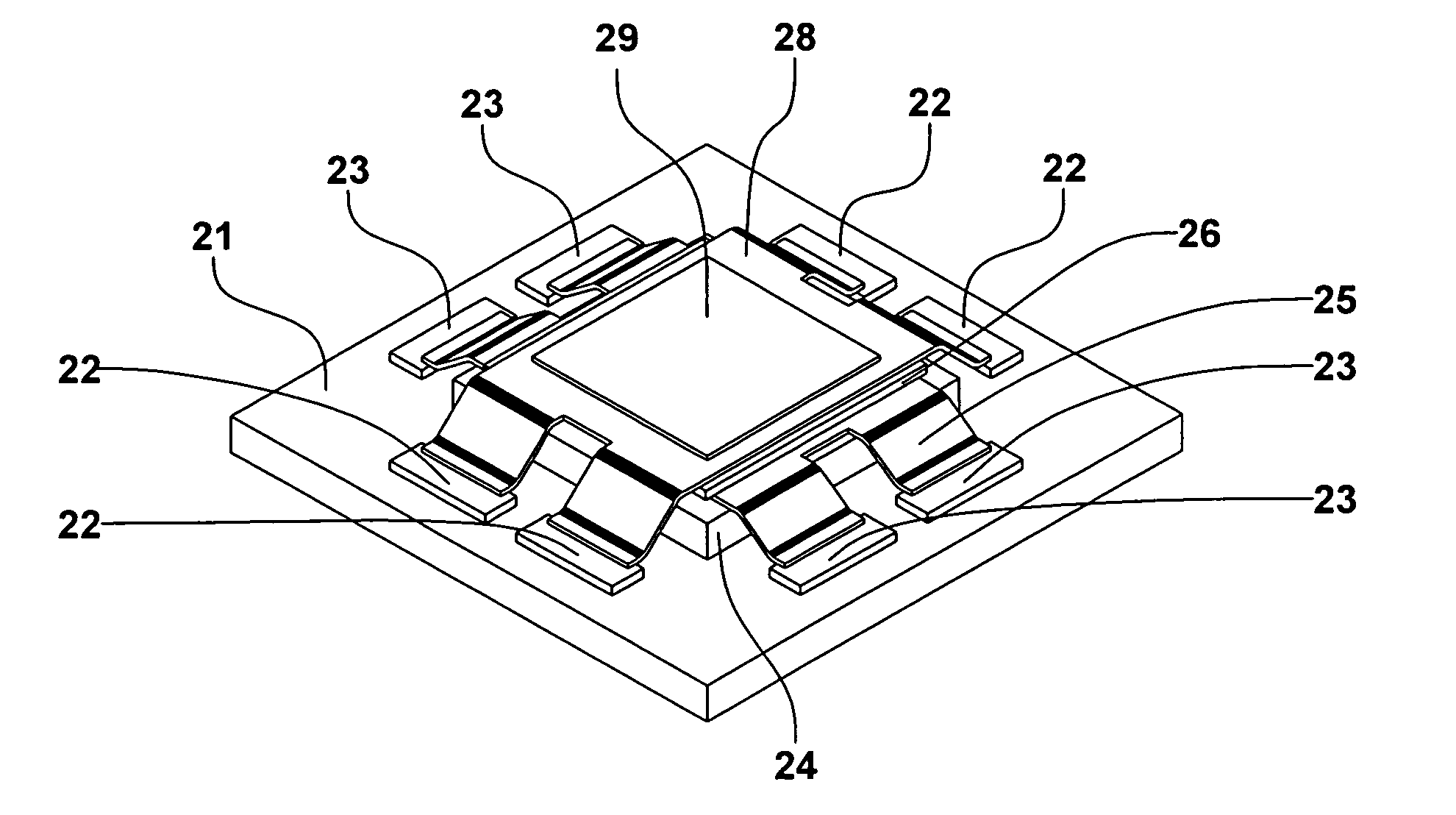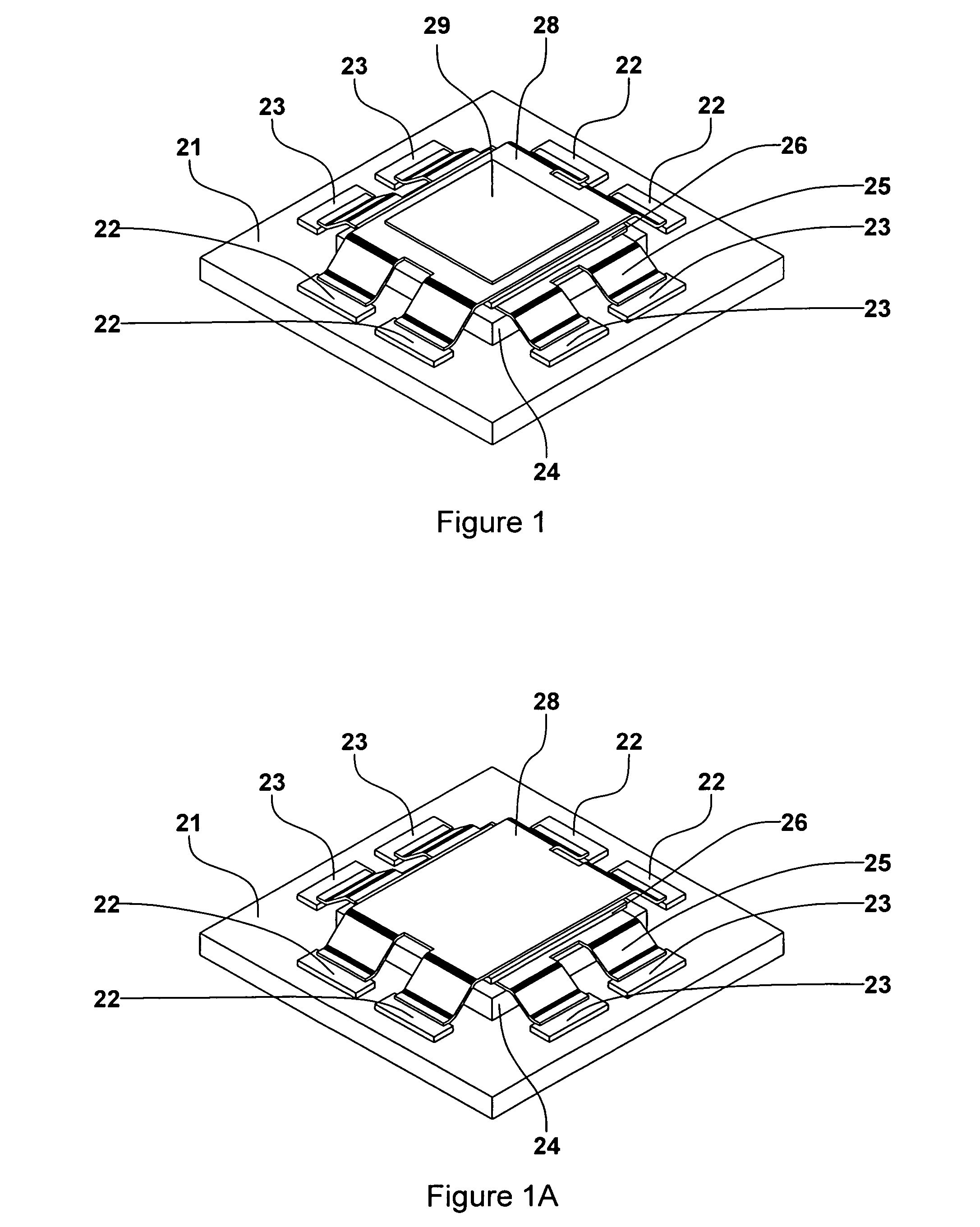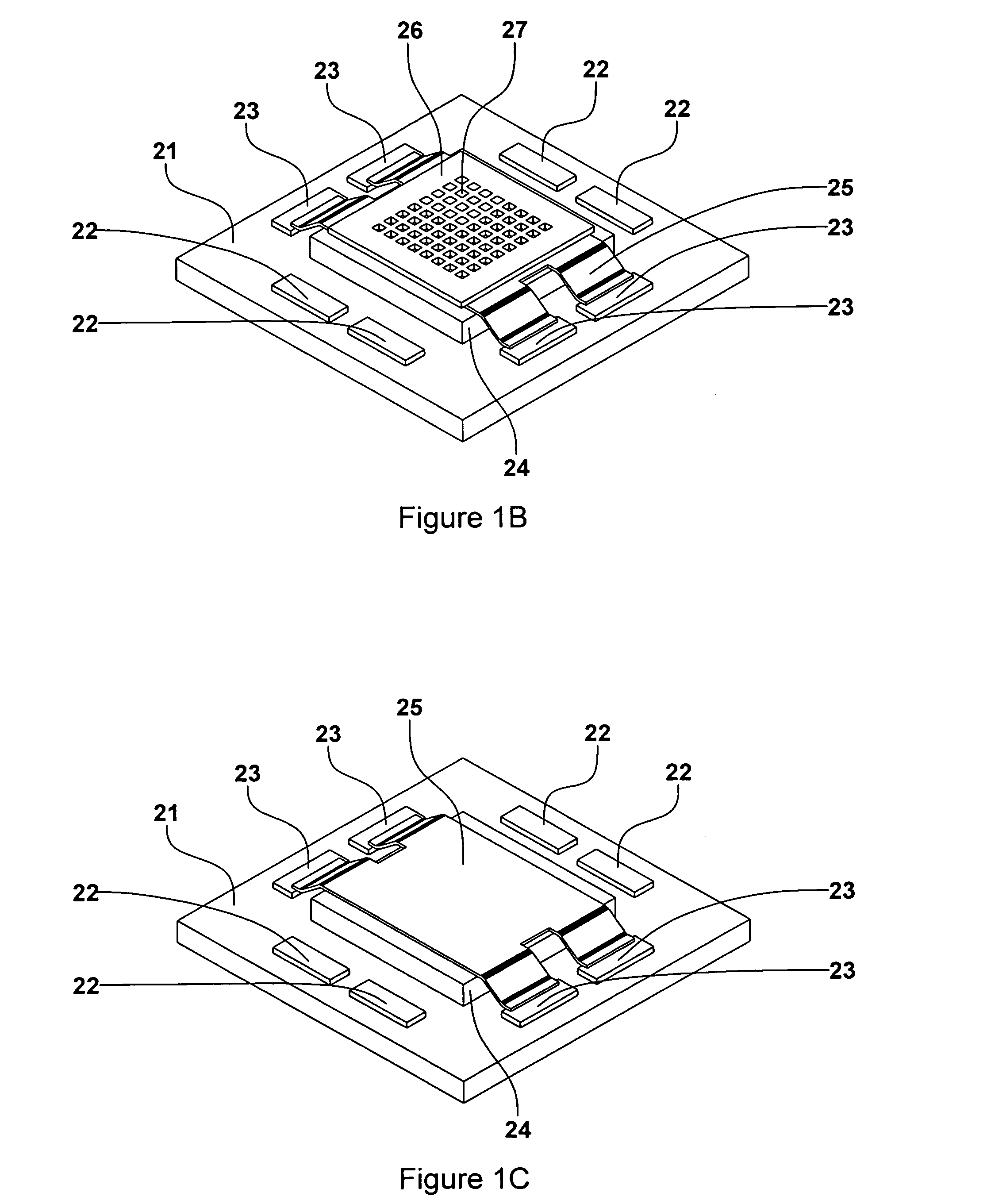Thermal infrared image detector
a detector and infrared technology, applied in the direction of material analysis, optical radiation measurement, instruments, etc., can solve the problems of high temperature and high vacuum, increase the cost of array production, and difficult formation of ceramic materials in thin layers, etc., and achieve the effect of low cos
- Summary
- Abstract
- Description
- Claims
- Application Information
AI Technical Summary
Benefits of technology
Problems solved by technology
Method used
Image
Examples
embodiment
Preferred Embodiment
[0067]FIGS. 1 through 1F show a preferred embodiment of the detector assembly based on the use of a liquid crystal material as the thermally sensitive material.
[0068] The complete assembly is shown in FIG. 1. A substrate 21 supports the other parts of the assembly. The substrate temperature is controlled by a temperature control system and maintained at a temperature where the detector is most sensitive. The temperature of the substrate should be uniform in the area under the detector array. This may be achieved by using a thermally conductive material for the substrate, such as copper or kovar, or by making the substrate thick enough to allow lateral heat conduction. In this case, the substrate can be glass or ceramic.
[0069] Integrated circuits are mounted on the substrate to act as row drivers 22 and column amplifiers 23.
[0070] A thermal insulator 24 is mounted on the substrate. This insulator should be a material with high thermal resistance and low heat ca...
second embodiment
[0083] It is not essential that the row drivers 22 and column amplifiers 23 be incorporated into the detector assembly. FIG. 2 shows a detector assembly consisting of a lower electrode support 25 (with column electrodes), a spacer 26, liquid crystal material, an upper electrode support 28 (with row electrodes), and an infrared absorbing layer 29 mounted in a pin grid array package 33. The package would normally be closed with a window made of infrared transmissive material such as silicon. In this case, the row drivers and column amplifiers are not part of the detector assembly and can be constructed with either integrated circuits or discrete components in a separate assembly.
third embodiment
[0084] The row and column electrodes do not have to be on separate supports. FIGS. 3 (top view) and 3A (bottom view) show both sets of electrodes fabricated on a single support 34. This arrangement places the electrodes on the top side of the support with the row electrodes 31 surrounding the column electrodes 32. The gap between the electrodes has an electrostatic field that extends above the surface of the support for a small distance, and a dielectric material in this area will alter the capacitance between the electrodes depending on its dielectric constant. This electrode structure is useful where the dielectric material is incorporated in a paint, such as the commercially available liquid crystal paints, or is incorporated as a powder in a binder such as gelatin. If these electrodes are placed against the surface of a material whose dielectric constant varies with temperature, local changes in temperature will result in changes in capacitance which can be measured in the same ...
PUM
 Login to View More
Login to View More Abstract
Description
Claims
Application Information
 Login to View More
Login to View More - R&D
- Intellectual Property
- Life Sciences
- Materials
- Tech Scout
- Unparalleled Data Quality
- Higher Quality Content
- 60% Fewer Hallucinations
Browse by: Latest US Patents, China's latest patents, Technical Efficacy Thesaurus, Application Domain, Technology Topic, Popular Technical Reports.
© 2025 PatSnap. All rights reserved.Legal|Privacy policy|Modern Slavery Act Transparency Statement|Sitemap|About US| Contact US: help@patsnap.com



